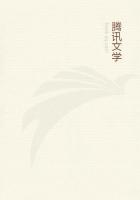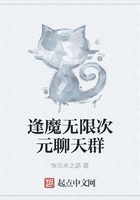"Botany is a sequel of murder and a chronicle of the dead." -JULIAN HAWTHORNE.
"A plant is not to be studied as an absolutely dead thing, but rather as a sentient being....To measure petals, to count stamens, to describe pistils without reference to their functions, or the why and wherefore of their existence, is to content one's self with husks in the presence of a feast of fatness - to listen to the rattle of dry bones rather than the heavenly harmonies of life.We have reason to be profoundly thankful for the signs to be seen on every side, that the dreary stuff which was called botany in the teaching of the past will soon cease to masquerade in its stolen costume, and that our children and our children's children will study not dried specimens or drier books, but the living things which Nature furnishes in such profusion....
"The reason of this radical change is not far to seek.Since man has learned that the universal brotherhood of life includes himself as the highest link in the chain of organic creation, his interest in all things that live and move and have a being has greatly increased.The movements of the monad now appeal to him in a way that was impossible under the old conceptions.He sees in each of the millions of living forms with which the earth is teeming, the action of many of the laws which are operating in himself; and has learned that to a great extent his welfare is dependent on these seemingly insignificant relations; that in ways undreamed of a century ago they affect human progress." -CLARENCE MOORES WEED.
MAGENTA TO PINK FLOWERS
SESSILE-LEAVED TWISTED-STALK
(Streptopus roseus) Lily-of-the-Valley family Flowers - Dull, purplish pink, 1/2 in.long or less, solitary, on threadlike, curved footstalks longer than the small flower itself, nodding from leaf-axils.Perianth bill-shaped, of 6spreading segments; stamens 6, 2-horned; style spreading into 3branches, stigmatic on inner side.Stem: 1 to 2 1/2 ft.high, ****** or forked.Leaves: Thin, alternate, green on both sides, many nerved, tapering at end, rounded at base, where they are seated on stem.Fruit: A round, red, many-seeded berry.
Preferred Habitat - Moist woods.
Flowering Season - May-July.
Distribution - North America east and west, southward to Georgia and Oregon.
As we look down on this graceful plant, no blossoms are visible;but if we bend the zig-zagged stem backward, we shall discover the little rosy bells swaying from the base of the leaves on curved footstalks (streptos = twisted, pous = a foot or stalk)very much as the plant's relatives the Solomon's seals grow.In the confident expectation of having its seeds dropped far and wide, it bears showy red berries in August for the birds now wandering through the woods with increased, hungry families.
The CLASPING-LEAVED TWISTED-STALK (S.amplexifolius), which has one or two greenish-white bells nodding from its axils, may be distinguished when not in flower by its leaves, which are hoary -not green - on the under side, or by its oval berry.Indeed most plants living in wet soil have a coating of down on the under sides of their leaves to prevent the pores from clogging with rising vapors.















